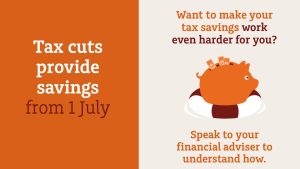Written by Tony Kaye – this article was published here. Source Vanguard Australia
Thinking of investing in a company that’s about to list on the stock exchange?
There’s an end-of-year listings rush going on right now, with more than 30 companies set to start trading their shares on the Australian Securities Exchange (ASX) for the first time in December.
They include companies involved in mining, energy, technology, property, financial services, health care, retailing and other sectors.
Around 180 companies have listed on the ASX since the start of 2021, and that number will easily top 200 by 31 December.
That’s more than three times the 56 Australian Initial Public Offerings (IPOs) that took place last year and the 63 new listings in 2019.
In fact, this year has seen a record number of IPOs globally. By the end of 2021 more than 2,000 new companies will have listed on various share markets around the world after raising in excess of $500 billion in capital from investors.
Of course, the whole point of investing in an IPO is to make money on your investment, ideally right from day one.
And that’s where there’s often a disconnect because there’s no guarantee that companies listing on a share market will actually deliver a positive investment return.
The year-to-date returns numbers
There have been some spectacular market performances by new companies on the ASX this year.
They include a band of more than a dozen companies that have delivered returns in excess of 100 per cent.
That compares with the broad Australian share market return of about 15 per cent.
The highest IPO return on the ASX has come from a company whose shares have risen by more than 500 per cent since it listed. Its share price jumped more than 300 per cent on the first day of trading.
But these types of returns are definitely not the norm. Out of all the companies that have listed on the ASX so far this year, around half are currently trading below the price at which their shares were initially sold to investors.
Of the new ASX companies that are in negative territory, around half are trading more than 30 per cent below their share issue price.
The share prices of 20 companies have dropped by between 40 per cent and almost 70 per cent.
What’s more, about 40 per cent of the companies that have listed on the ASX in 2021 have fallen below their share issue price right from their first day as a public company.
So their investors lost money from the very start, even though the Australian share market as a whole has posted double-digit gains this year.
Taking a long-term approach
In the face of record low interest rates, many investors worldwide are hunting for higher returns.
Increasingly people are shifting their cash holdings (often held in low-interest bank savings accounts) into higher-risk asset classes such as shares.
As part of this trend, there have been record cash inflows into exchange traded funds (ETFs) and managed funds that cover whole share markets such as Australia.
This has been driven by investors seeking out higher growth returns as well as regular income distribution payments.
Investors in funds also want to diversify their holdings by having a broad exposure to many listed companies, rather than just a few.
The IPO boom, on the other hand, is largely being fuelled by speculators seeking out short-term profits. A large percentage of IPO investors look to make a gain within the first few trading days and then sell out.
Yet, as the new listings data from the ASX shows, a large number of IPOs don’t deliver profits.
So, take care if you’re planning to take part in the current IPOs listing rush on the ASX.
Many IPO companies are quite small, have a limited track record, and have gone down the listing pathway to raise money from investors so they can continue to fund their expansion.
As such, they may have minimal revenue and be a long way off from recording a profit, let alone paying a dividend to their shareholders – if ever.
It’s important to keep in mind though that every listed company in the world – including the very largest companies – have at some stage listed on a share market through an IPO process.
Participating in an IPO could certainly form part of your broad, long-term investment strategy.
But always keep in mind that IPOs do tend to carry a relatively high degree of risk and can be prone to speculative share market trading.
Just as you should do with any other investment, it’s crucial to undertake extensive due diligence before committing your money to an IPO.
That includes reading the company’s prospectus thoroughly and conducting other market research.
In short, look before you leap into an IPO.







